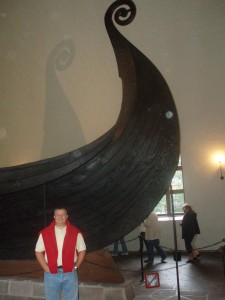 Yesterday I blogged about my neighbor Larry and how I see his handyman business as an economic indicator and proof the economy is dipping again into recession. I also cited recent survey data indicating that donors are planning to tighten their belts in the coming months. If you didn’t get a chance to read that post, click here and then come back for today’s follow-up post.
Yesterday I blogged about my neighbor Larry and how I see his handyman business as an economic indicator and proof the economy is dipping again into recession. I also cited recent survey data indicating that donors are planning to tighten their belts in the coming months. If you didn’t get a chance to read that post, click here and then come back for today’s follow-up post.
While there is nothing any of us can do to stop the economic tides from rising and falling, I submit that there are things we can do to prepare for such occurences and the following are a few tips you might want to consider:
Tip#1: Get closer to your donors and not farther away.
Donors are part of your non-profit family. During tough times, families pull together. They don’t ignore each other. Your instinct might be to give donors space, solicit them less, and be respectful of limited resources. Even though these are good intentions, the message you’re sending is that donors are only your friends during prosperous times when they have money. Don’t send the message that donors are only ATMs in your eyes. Find ways to engage them.
Tip #2: Tell donors what you are doing to help your clients get through tough economic times.
Donors like to see “return on investment” when they make a charitable contribution. When recession-thinking permeates our donors thoughts, lets embrace the moment and show them how their contributions are making a difference in the lives of others. Don’t use “guilt messaging” to solicit. Use “we’re all in this together” and “neighbors-helping-neighbors” as part of your stewardship messaging.
Tip #3: Invest in volunteer management and promote volunteerism like never before.
There will be people who want to support your mission, but cannot do so financially during tough times. Providing people an opportunity to support your mission by donating their time will: 1) help you pull them closer and not push them away (see first tip), 2) cultivate future donors (because the recession will end one day and they will be able to donate again), and 3) help your agency’s staffing budget as you might be considering budgetary cuts.
Tip #4: Invest a lot more time in re-building or manicuring your board of directors.
Your case for support will never be greater than now. As you approach board volunteer prospects, they won’t need any convincing that you need as many talented people around your board room table to help make difficult decisions and weather an economic storm. Find the time! Figure out how much time your organization spent on board development in 2010, then double or triple the amount of time you spend on it going forward. Doing so will help you survive and position you to be very strong on the other side of this recession.
Tip#5: Don’t stop soliciting individuals.
Individual giving is where it is at in charitable giving. Spend most of your time cultivating, soliciting, and stewarding individuals and less time on foundations, corporations and government. This is a great time to invest in building your annual campaign or annual fund drive and dial back a little bit on special events. Think about it for a moment . . . during tough times people eliminate “frills” like entertainment. Many of your donors probably see their special event contributions are “nights out on the town with a charitable angle”. I assure you that they look at their annual campaign pledge very differently. Don’t eliminate all of your events, but now might be the time to kill old and tired events.
There are literally two or three more handfuls of tips I would’ve provided, but I’m running out of space. So, I encourage you to use the comment box below to weigh-in with your thoughts, tips and current strategies. We can all learn from each other!
Here is to your health!
Erik Anderson Owner, The Healthy Non-Profit LLC eanderson847@gmail.com http://twitter.com/#!/eanderson847 http://www.facebook.com/eanderson847 http://www.linkedin.com/in/erikanderson847












